How to pass your ATPL Ground school Performance Exam. Here are the Facts and figures!, ATPL Ground school Performance Facts and figures:
Key
ROC = Rate of climb
ROD = Rate of descent
TAS = True airspeed
GS = Groundspeed
NM = Nautical miles
FPM = Feet per minute
KTS = Knots (nautical miles per hour)
M = Metres
Ft = Feet
ASDA = Accelerate stop distance available
TODA = Takeoff distance available
TORA = Takeoff run available
Conversions
1 metre = 3.28 feet
1 Nautical mile = 6080 feet
AIRCRAFT WINGSPAN LESS THAN 60 METRES
Semi width (m) = (60 + 1/2 wingspan) + 0.125D
D = Distance from reference zero
OBSTACLE ACCOUNTABILITY AREA
AIRCRAFT WINGSPAN 60 METRES OR MORE
Semi width (m) = 90 + 0.125D
TAKE OFF (CLASS B)
PERFORMANCE FACTORS
Factors applied based on the assessment of the runway condition.
Paved wet: 1.0
Grass wet: 1.3
Grass dry: 1.2
Slope: 1.05 per 1%
(5% increase per 1% slope. Only apply if take – off distance will be increased)
REGULATION FACTORS
Factors applied as required by the regulator to ensure safety margins on the take off distances.
UNBALANCE FIELD
1.3 not exceeding ASDA
1.15 not exceeding TODA
1.0 not exceeding TORA
BALANCED FIELD
1.25 not exceeding TORA
NB: Balanced field is when TODA = ASDA
TAKEOFF CLASS A
The regulation factors for class A are slightly more complicated. It depends upon whether we are looking at take off distance with or without clear way and we must also compare the take off run with all engines inoperative. We don’t expect that you will be asked to compare each possibility to find the required take – of for accelerate – stop distance. However to see what we are referencing please head to the CAA CAP 698 section 4 pages 7–8.
LANDING
Factors applied based on the assessment of the runway condition.
Wet : 1.15
Grass: 1.15
Slope: 1.05 per 1% (only apply if landing distance will be increased.)
REGULATION FACTOR
Factors applied as required by the regulator to ensure a safety margin on landing distances
All props: 1.43
All Jets: 1.67
PERFORMANCE: TAKE OFF V SPEEDS – DEFINITIONS
VMCG – SPEED FOR MINIMUM CONTROL ON THE GROUND
This is the minimum speed at which directional control would be maintained following an engine failure on the ground. The direction must be maintained using only aerodynamic controls, it is assumed the remaining engine has take off thrust applied.
VMCA – SPEED FOR MINIMUM CONTROL IN THE AIR
This is the minimum speed at which directional control would be maintained following an engine failure in the air. In this case, directional control can be maintained when the heading can be kept within 20 degrees of the planned heading using no more than 5 degrees angle of bank.
VEF – SPEED OF CRITICAL ENGINE FAILURE
The speed at which we assume the critical engine will fail. It is never less than VMCG and is equal to the speed attained 2 seconds before V1.
VMU – SPEED FOR MINIMUM ‘UNSTICK’
At and above this speed the aircraft can safely lift off the ground and safely continue it’s take off and climb to screen height. It is the lowest unstick speed for a given set of conditions.
V1 – THE TAKE-OFF DECISION SPEED
This is both the fastest speed at which the aircraft can be stopped and the slowest speed at which the aircraft can continue the take-off roll following an engine failure.
VR – THE ROTATE SPEED
The calculated speed that the pilot should rotate the aircraft to lift the nose wheel from the runway.
VLOF – LIFT OFF SPEED
The speed at which the main wheels should lift off the ground following rotation at VR. This varies depending on certain conditions e.g mass and flap configuration.
V2 – THE TAKE-OFF SAFETY SPEED
The speed at which the aircraft should accelerate to after rotating at VR with one engine inoperative. It is the slowest speed at which it is deemed safe to climb the aeroplane with one engine inoperative.
VMBE – SPEED FOR MAXIMUM BREAK ENERGY
This speed is the highest speed from which the aircraft could come to a complete stop within the energy capabilities of the breaks.
VTYRE – THE HIGHEST ROTATING TYRE SPEED
This is the highest speed along the ground that the tyre could rotate before losing its structural integrity and failing.
This table compares VR and V2 to the speeds of VMCA and VS. Questions on the comparison of these speeds are frequently asked in the EASA exams so this is knowledge that we recommend obtaining!
| VR Minimum | V2 Minimum | |
| VMCA | 1.05 VMCA | 1.1 VMCA |
| VS | 1.1 VS (Class B aircraft) | 1.2 VS (B)1.12 VS (A) |
NB: VS = Stall speed























